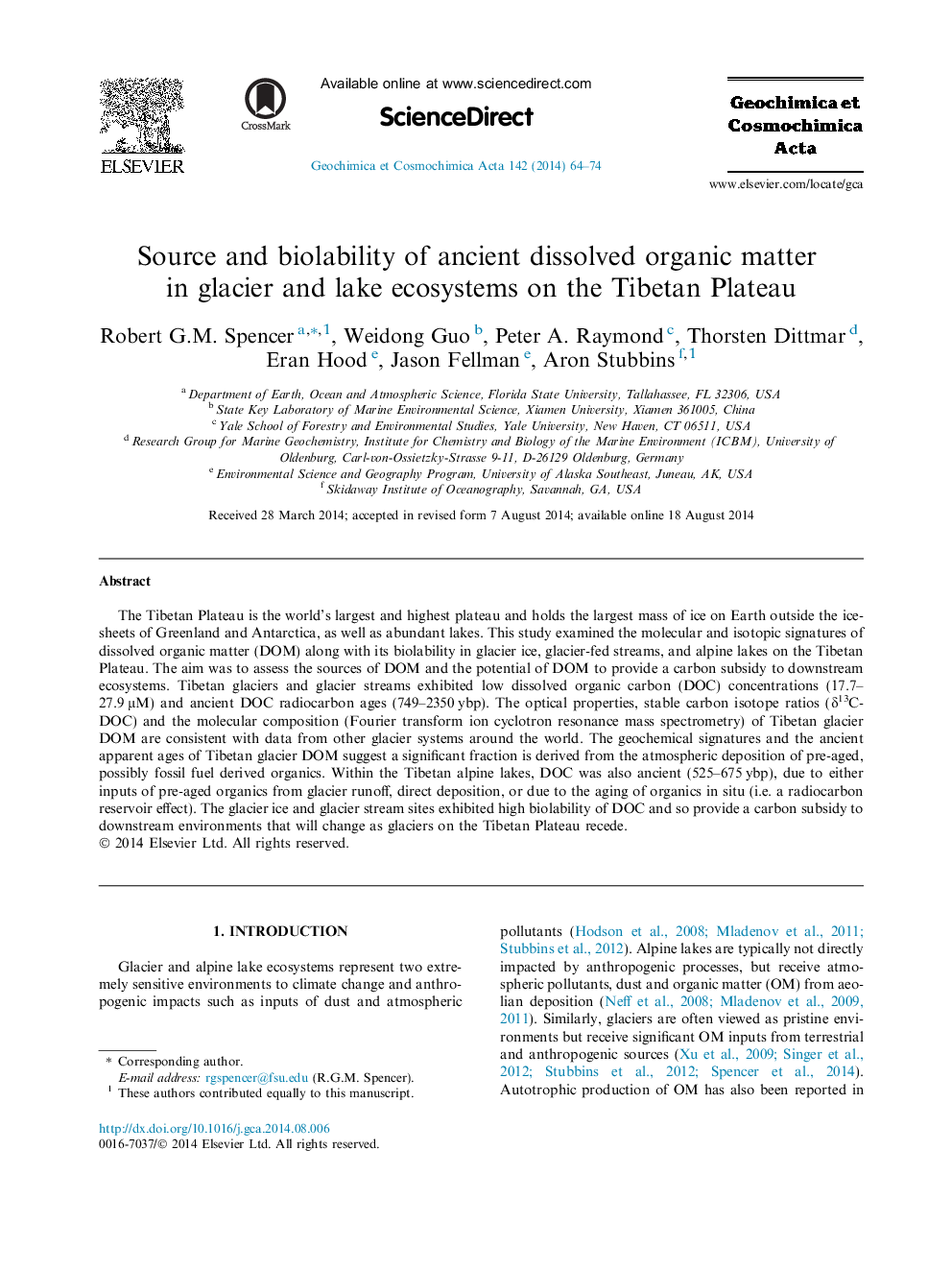| Article ID | Journal | Published Year | Pages | File Type |
|---|---|---|---|---|
| 6438423 | Geochimica et Cosmochimica Acta | 2014 | 11 Pages |
Abstract
The Tibetan Plateau is the world's largest and highest plateau and holds the largest mass of ice on Earth outside the ice-sheets of Greenland and Antarctica, as well as abundant lakes. This study examined the molecular and isotopic signatures of dissolved organic matter (DOM) along with its biolability in glacier ice, glacier-fed streams, and alpine lakes on the Tibetan Plateau. The aim was to assess the sources of DOM and the potential of DOM to provide a carbon subsidy to downstream ecosystems. Tibetan glaciers and glacier streams exhibited low dissolved organic carbon (DOC) concentrations (17.7-27.9 μM) and ancient DOC radiocarbon ages (749-2350 ybp). The optical properties, stable carbon isotope ratios (δ13C-DOC) and the molecular composition (Fourier transform ion cyclotron resonance mass spectrometry) of Tibetan glacier DOM are consistent with data from other glacier systems around the world. The geochemical signatures and the ancient apparent ages of Tibetan glacier DOM suggest a significant fraction is derived from the atmospheric deposition of pre-aged, possibly fossil fuel derived organics. Within the Tibetan alpine lakes, DOC was also ancient (525-675 ybp), due to either inputs of pre-aged organics from glacier runoff, direct deposition, or due to the aging of organics in situ (i.e. a radiocarbon reservoir effect). The glacier ice and glacier stream sites exhibited high biolability of DOC and so provide a carbon subsidy to downstream environments that will change as glaciers on the Tibetan Plateau recede.
Related Topics
Physical Sciences and Engineering
Earth and Planetary Sciences
Geochemistry and Petrology
Authors
Robert G.M. Spencer, Weidong Guo, Peter A. Raymond, Thorsten Dittmar, Eran Hood, Jason Fellman, Aron Stubbins,
